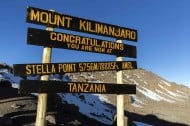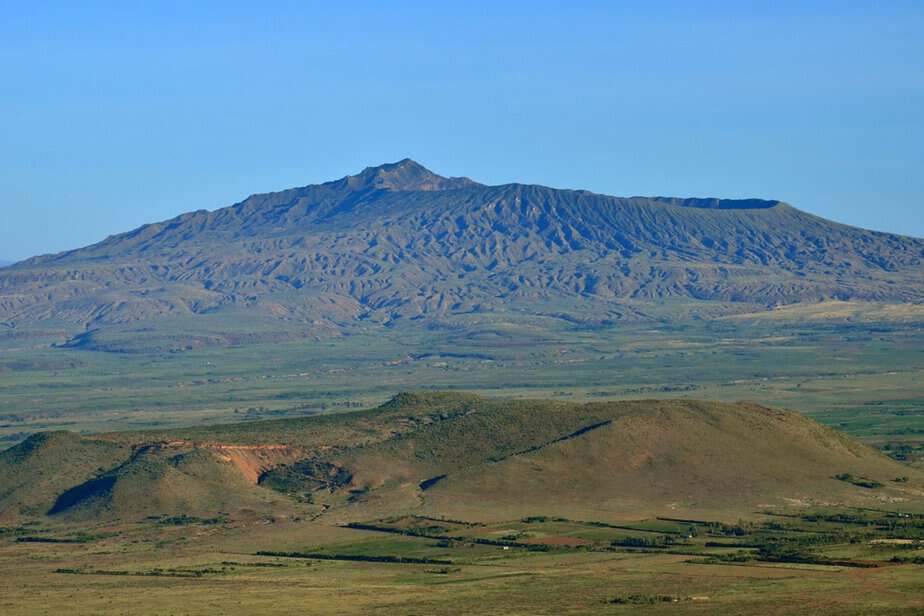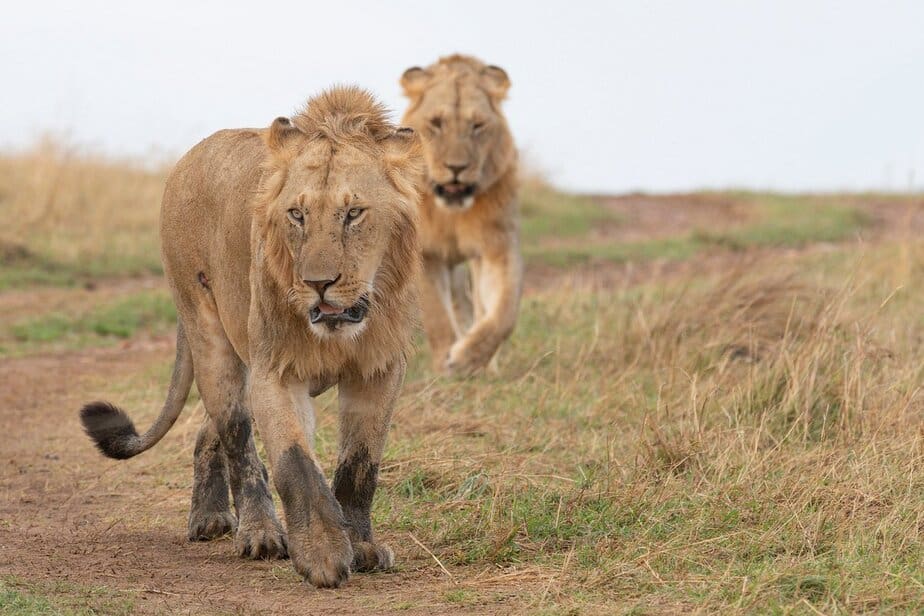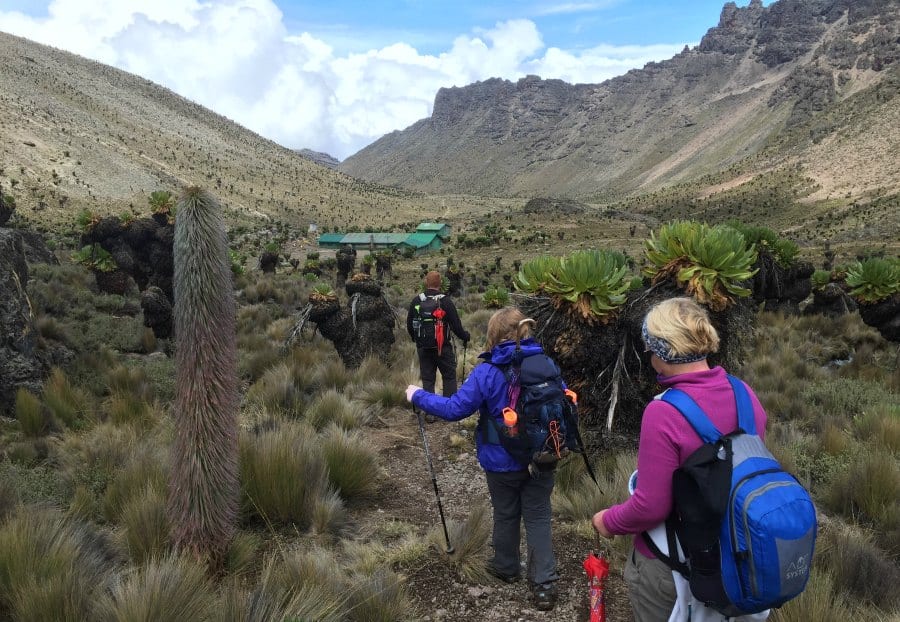
Mount Kenya Climbing Routes Guide
Mount Kenya Climbing Routes: The Ultimate Guide for Trekkers and Climbers
🏔️ Introduction
Mount Kenya—Africa’s second-highest peak—rises majestically in central Kenya, offering an unforgettable adventure to hikers, trekkers, and climbers. Whether you’re an experienced mountaineer seeking the thrill of scaling Batian or Nelion, or a passionate trekker aiming for Point Lenana, Mount Kenya has a route for you.
This guide covers everything you need to know about Mount Kenya climbing routes, helping you choose the path that suits your fitness level, experience, and desire for adventure. From the scenic Chogoria Route to the challenging Naro Moru ascent, you’ll find comprehensive route comparisons, preparation tips, and trekking insights to make your climb safe and enjoyable.
🌍 Overview of Mount Kenya
Mount Kenya is a stratovolcano that last erupted approximately 3 million years ago. It is the highest mountain in Kenya and the second-highest in Africa after Mount Kilimanjaro. The mountain’s rugged peaks, alpine meadows, glacial lakes, and rich biodiversity make it a UNESCO World Heritage Site and a sacred landmark for the Kikuyu people.
Key Facts:
- Elevation: 5,199 meters (17,057 ft)
- Main Peaks: Batian (5,199m), Nelion (5,188m), Point Lenana (4,985m)
- Location: Central Kenya, within Mount Kenya National Park
- Park Status: UNESCO World Heritage Site
🌟 Why Climb Mount Kenya?
Climbing Mount Kenya isn’t just about reaching a summit—it’s about the journey through diverse landscapes, encountering unique wildlife, and experiencing the rich culture and history of the region.
Top Reasons to Climb:
- Less crowded than Kilimanjaro
- More varied and scenic trails
- A choice between trekking and technical climbing
- Affordable permits and guiding services
- Stunning sunrise views from Point Lenana
- Cultural experiences with the Kikuyu and Meru communities
☀️ Best Time to Climb Mount Kenya
Timing your climb is crucial. While Mount Kenya can be climbed year-round, the best weather for hiking is during the dry seasons:
🔹 Dry Seasons:
- January to March (Clear skies, warmer conditions)
- July to October (Cool and dry, great for photography and wildlife spotting)
🔸 Rainy Seasons to Avoid:
- April to early June (Long rains)
- Mid-October to December (Short rains)
During the rainy seasons, the trails become muddy, slippery, and visibility can be poor—especially on the higher sections.
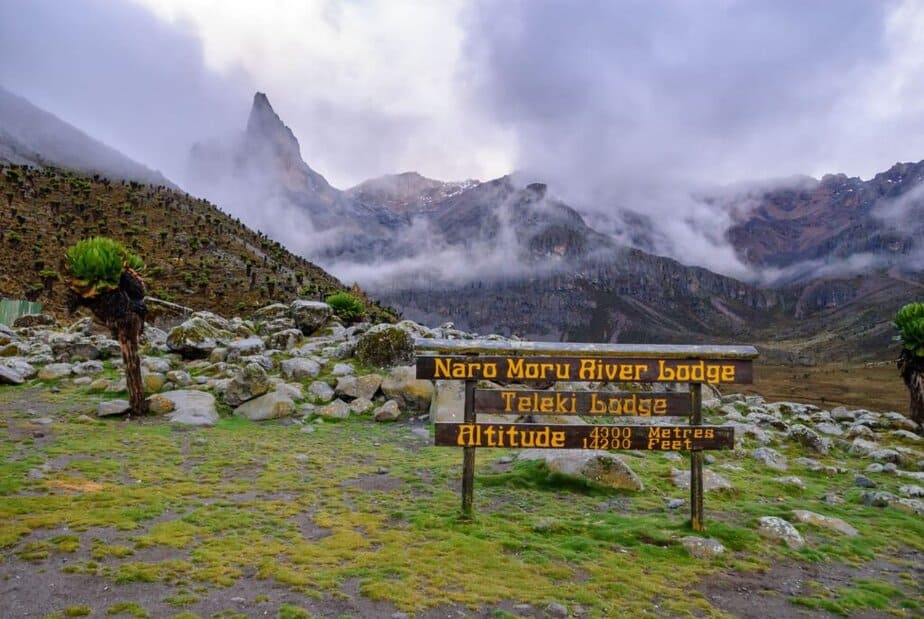
🥾 Mount Kenya Climbing Routes
Mount Kenya has multiple ascent routes, each offering a unique perspective of the mountain and varying in difficulty, length, and scenic value. Here’s an in-depth look at the most popular and established routes:
1. Sirimon Route
- Difficulty: Moderate
- Duration: 4–6 days
- Starting Point: Sirimon Gate (2,650m)
- Best For: Acclimatization and scenic views
The Sirimon Route is one of the most popular and beginner-friendly routes up Mount Kenya. It starts on the northwest side of the mountain and passes through ancient forests and heathlands, giving trekkers the best chance to spot wildlife.
Highlights:
- Less traffic
- Gradual ascent for better acclimatization
- Connects well with the Chogoria Route for a scenic descent
Sample Itinerary:
- Day 1: Sirimon Gate → Old Moses Camp (3,300m)
- Day 2: Old Moses Camp → Shipton’s Camp (4,200m)
- Day 3: Summit attempt via Point Lenana → Descent to Chogoria or back down Sirimon
2. Naro Moru Route
- Difficulty: Challenging
- Duration: 3–5 days
- Starting Point: Naro Moru Gate (2,400m)
- Best For: Fast climbs, athletic trekkers
The Naro Moru Route is the most direct and fastest way to Point Lenana but is also the steepest. The infamous “Vertical Bog”, a wet, steep section, is physically demanding. It’s best suited for trekkers with prior experience or those pressed for time.
Highlights:
- Shortest path to Point Lenana
- Austrian Hut stopover for acclimatization
- Best for round-trips if time is limited
3. Chogoria Route
- Difficulty: Moderate to Challenging
- Duration: 4–6 days
- Starting Point: Chogoria Gate (2,850m)
- Best For: Scenic beauty and landscapes
The Chogoria Route is widely considered the most beautiful trail up Mount Kenya. It ascends through lush bamboo forests, waterfalls, and alpine lakes before joining other trails near the summit. Though longer, it’s a favorite for descent after using Sirimon or Naro Moru for the ascent.
Highlights:
- Views of Lake Michaelson and Gorges Valley
- Less steep, great for acclimatization
- Perfect for photography
4. Burguret Route
- Difficulty: Moderate to difficult
- Duration: 4–6 days
- Starting Point: Gathiuru Forest Station
- Best For: Experienced trekkers seeking solitude
The Burguret Route is less traveled and more rugged, passing through dense rainforests and bamboo zones. Because it’s rarely used, this route is perfect for adventurous climbers looking to avoid the crowds.
Highlights:
- Pristine forest and untouched trails
- High chance of seeing wildlife
- Ideal for acclimatization due to steady elevation gain
Drawbacks:
- Navigation is harder
- Requires a guide familiar with the route
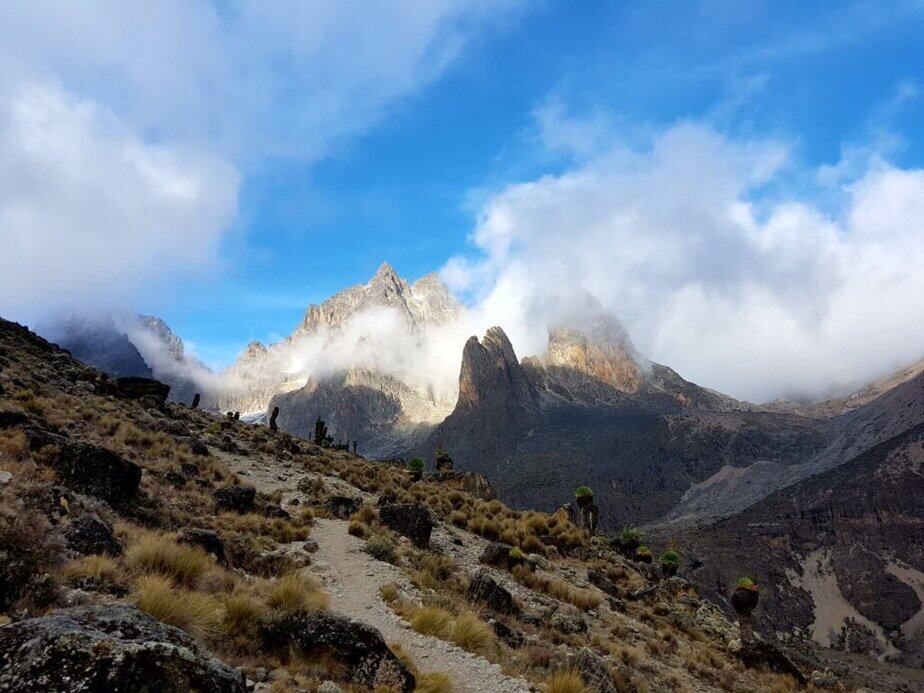
5. Timau Route
- Difficulty: Easy to moderate
- Duration: 4–5 days
- Starting Point: North of the mountain near Timau town
- Best For: Gentle ascent, photography, and acclimatization
The Timau Route is known for its dry terrain and expansive views. It’s great for those looking for a longer, more gradual trek with fewer obstacles.
Highlights:
- Dry trail (less muddy than other routes)
- Excellent for altitude acclimatization
- Sweeping views of the plains
Note: This route doesn’t directly reach the main peaks—often combined with other routes like Chogoria or Sirimon.
6. Summit Circuit Trail
- Difficulty: Moderate
- Duration: 2–3 days
- Best For: Those acclimatizing or wanting to explore multiple faces of Mount Kenya
The Summit Circuit Trail encircles the base of Batian and Nelion and connects multiple camps. It’s an excellent addition for acclimatization and sightseeing before a summit attempt or descent.
Highlights:
- 360-degree views of the mountain
- Visit to glaciers and rock formations
- Connects Austrian Hut, Shipton’s, and Kami Hut
🧗 Technical Climbs: Batian & Nelion Peaks
For serious mountaineers, Batian (5,199m) and Nelion (5,188m) offer technical climbing challenges that require ropes, harnesses, and alpine climbing experience.
Batian via the North Face (Standard Route)
- Season: Best from July to September
- Grade: UIAA IV–V (moderate rock climbing)
Nelion via the South Face (Normal Route)
- Season: Best from December to March
- Grade: UIAA III–IV
Important: These peaks are not trekking routes. Climbers must be proficient in technical mountaineering and must go with certified guides.
🧳 Choosing the Best Route for You
| Your Goal | Recommended Route | Reason |
|---|---|---|
| Short on time | Naro Moru | Quickest route to Point Lenana |
| Best acclimatization | Sirimon | Gradual ascent with scenic camps |
| Most scenic | Chogoria | Stunning lakes, valleys, waterfalls |
| Least crowded | Burguret or Timau | Off-the-beaten-path experiences |
| Technical climbing | Batian or Nelion | Requires alpine climbing skills |
🎟️ Permits, Fees & Regulations
Mount Kenya lies within a national park managed by the Kenya Wildlife Service (KWS). You’ll need to pay park entry fees and, in some cases, additional charges for huts or camps.
Park Entry Fees (as of 2024):
- Non-resident adults: $60 per day
- Non-resident children: $30 per day
- East African residents: KES 1,000–2,000 per day
Additional costs may include:
- Camping fees: $10–$20 per night
- Guide and porter fees
- Hut accommodation (where available)
Tip: Always check current rates with KWS or a local trekking company before your trip.
📅 Suggested Trekking Itineraries
4-Day Sirimon Route (Point Lenana)
- Day 1: Nairobi → Sirimon Gate → Old Moses Camp
- Day 2: Old Moses → Shipton’s Camp
- Day 3: Summit Point Lenana → Descent to Old Moses
- Day 4: Old Moses → Sirimon Gate → Nairobi
5-Day Chogoria–Sirimon Traverse
- Day 1: Nairobi → Chogoria Gate → Meru Bandas
- Day 2: Meru Bandas → Lake Ellis → Lake Michaelson
- Day 3: Lake Michaelson → Point Lenana → Shipton’s Camp
- Day 4: Shipton’s → Old Moses
- Day 5: Old Moses → Sirimon Gate → Nairobi
🎒 What to Pack for Mount Kenya
Clothing:
- Waterproof hiking boots
- Warm layers (fleece, down jacket)
- Base layers and thermal wear
- Waterproof pants and jacket
Gear:
- Backpack (40–60L)
- Sleeping bag (rated to -10°C)
- Trekking poles
- Headlamp
- Water bottles or hydration bladder
Other Essentials:
- Sunglasses and sunscreen
- Personal medication and first aid kit
- High-energy snacks
- Passport and permits
🧬 Acclimatization & Altitude Sickness
At nearly 5,000 meters, Mount Kenya presents a real risk of Acute Mountain Sickness (AMS). Here’s how to manage it:
- Ascend gradually
- Stay hydrated
- Avoid alcohol
- Follow the “climb high, sleep low” method
- Consider Diamox (after consulting a doctor)
Symptoms include headache, nausea, dizziness, and fatigue. Always descend if symptoms worsen.
🧑🤝🧑 Hiring Guides and Porters
Hiring local support not only helps you physically but also supports the local economy.
Average Costs (per day):
- Guide: $25–$40
- Porter: $15–$20
- Cook (optional): $15–$25
Most climbers book through local operators that include permits, transfers, meals, guides, and porters.
⛺ Camps & Accommodation
Popular huts and camps include:
- Old Moses Camp (Sirimon) – 3,300m
- Shipton’s Camp (Sirimon) – 4,200m
- Austrian Hut (Naro Moru) – 4,790m
- Lake Ellis Campsite (Chogoria)
- Meru Bandas (Chogoria Gate)
Bring your own tent if you’re not using hut accommodation.
🦓 Flora and Fauna on Mount Kenya
Mount Kenya hosts an incredible variety of ecosystems:
- Forests: Home to elephants, monkeys, and buffalo
- Moorlands: Giant lobelia and groundsel
- Alpine zone: Birds like sunbirds, rock hyrax, and eagles
- Glacial zone: Lichens and mosses
Keep your eyes peeled—some trekkers spot rare species like the melanistic leopard (black panther).
🙏 Cultural Significance & Local Communities
Mount Kenya is sacred to the Kikuyu, Embu, and Meru peoples. They consider it the home of Ngai, their god. You’ll often find local guides sharing folklore and traditions passed down for generations.
Engaging with local communities through responsible tourism helps preserve culture and livelihoods.
✅ Final Tips for a Successful Climb
- Train physically for 4–6 weeks before your trek
- Go slow and pace yourself
- Bring cash for tips and emergencies
- Always check the weather before your trip
- Use a reputable trekking company
- Respect the mountain and leave no trace
❓FAQs about Climbing Mount Kenya
Q: Is Mount Kenya harder than Kilimanjaro?
A: Mount Kenya is often considered technically harder, especially if climbing Batian or Nelion. Point Lenana is easier and suitable for most trekkers.
Q: Can you climb Mount Kenya without a guide?
A: While possible, it’s strongly recommended to hire a guide for safety and navigation.
Q: How cold does it get?
A: Nighttime temperatures near the summit can drop below -10°C (14°F).
Q: Are there age limits?
A: No official age limit, but children under 12 may struggle with altitude. Always consult a doctor first.
🏁 Conclusion
Climbing Mount Kenya is more than a trek—it’s a journey through one of Africa’s most awe-inspiring landscapes. With its range of climbing routes, from the technical peaks of Batian to the scenic trails leading to Point Lenana, Mount Kenya offers something for every adventurer.
Whether you choose the scenic Chogoria Route or the challenging Naro Moru trail, preparation, respect for nature, and a spirit of adventure will reward you with unforgettable memories. 🌄
